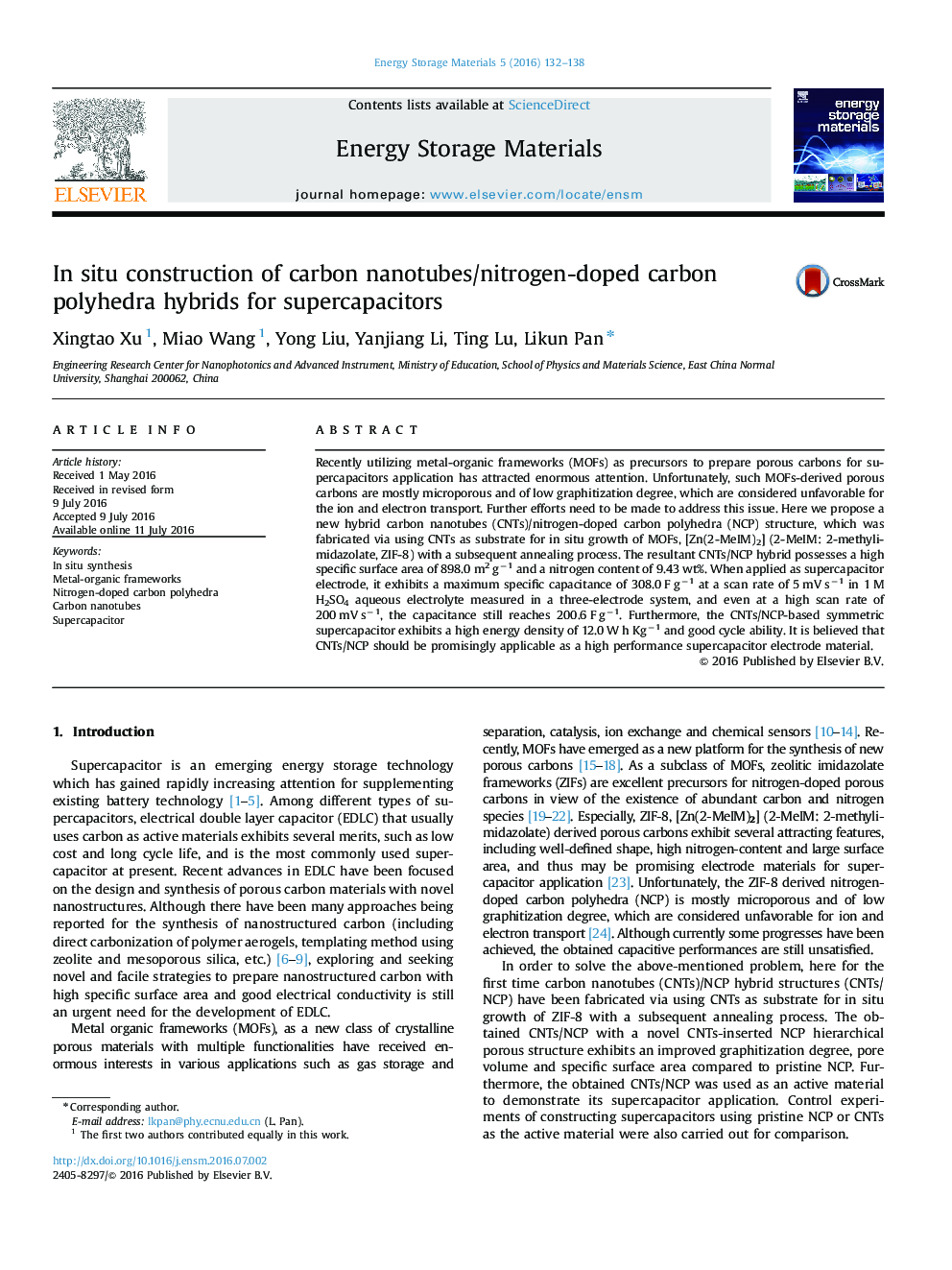| Article ID | Journal | Published Year | Pages | File Type |
|---|---|---|---|---|
| 1564562 | Energy Storage Materials | 2016 | 7 Pages |
Recently utilizing metal-organic frameworks (MOFs) as precursors to prepare porous carbons for supercapacitors application has attracted enormous attention. Unfortunately, such MOFs-derived porous carbons are mostly microporous and of low graphitization degree, which are considered unfavorable for the ion and electron transport. Further efforts need to be made to address this issue. Here we propose a new hybrid carbon nanotubes (CNTs)/nitrogen-doped carbon polyhedra (NCP) structure, which was fabricated via using CNTs as substrate for in situ growth of MOFs, [Zn(2-MeIM)2] (2-MeIM: 2-methylimidazolate, ZIF-8) with a subsequent annealing process. The resultant CNTs/NCP hybrid possesses a high specific surface area of 898.0 m2 g−1 and a nitrogen content of 9.43 wt%. When applied as supercapacitor electrode, it exhibits a maximum specific capacitance of 308.0 F g−1 at a scan rate of 5 mV s−1 in 1 M H2SO4 aqueous electrolyte measured in a three-electrode system, and even at a high scan rate of 200 mV s−1, the capacitance still reaches 200.6 F g−1. Furthermore, the CNTs/NCP-based symmetric supercapacitor exhibits a high energy density of 12.0 W h Kg−1 and good cycle ability. It is believed that CNTs/NCP should be promisingly applicable as a high performance supercapacitor electrode material.
Graphical abstractFigure optionsDownload full-size imageDownload as PowerPoint slide
